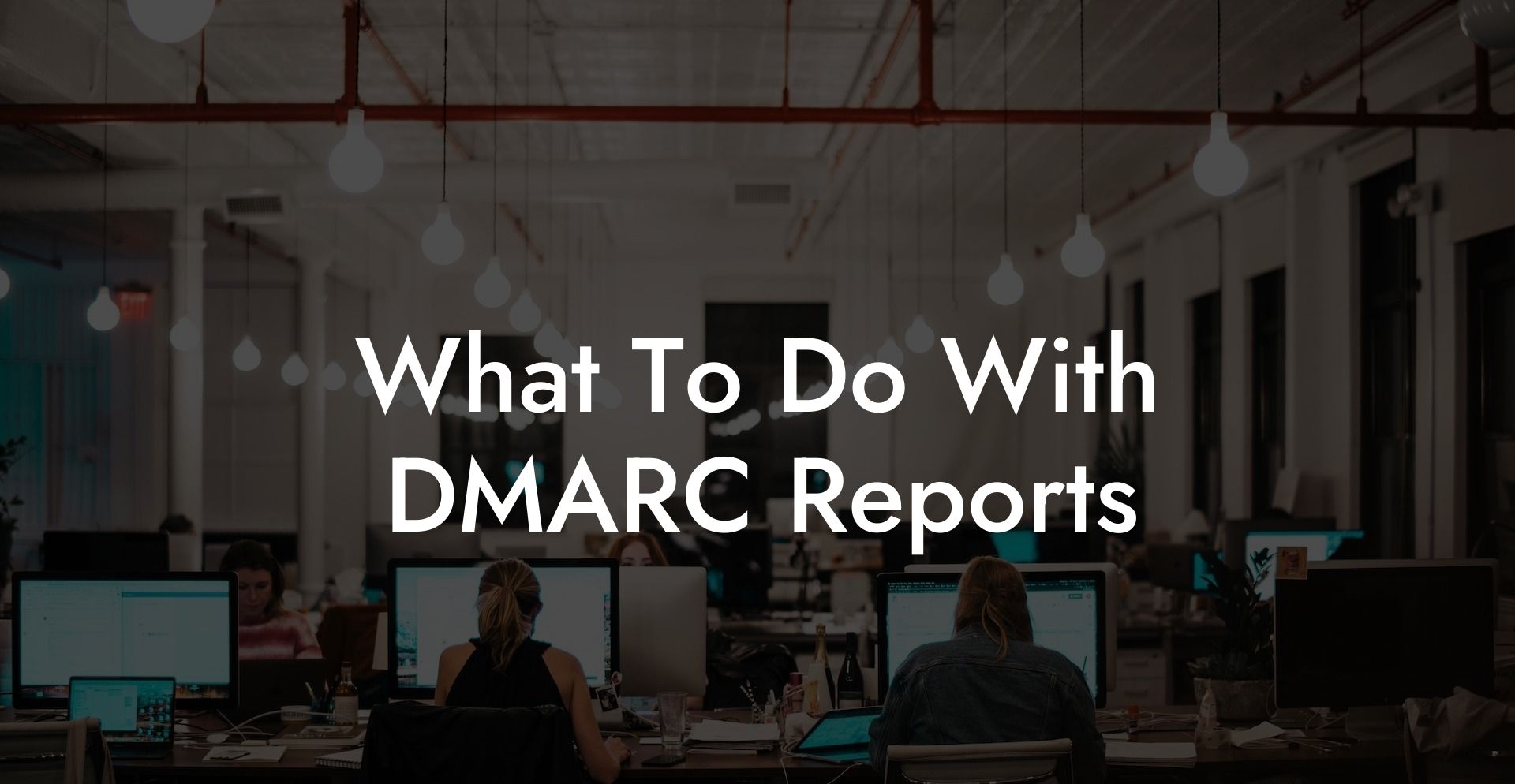The digital landscape has dramatically evolved over the years, and with that shift has come an increased sense of urgency to secure communications and sensitive data. Email is perhaps the most commonly used online communication medium, and as a result, it has become a primary target for cyber attackers. This is where DMARC (Domain-based Message Authentication, Reporting & Conformance) reports come into play! In this article, we will explore the purpose, significance, and utilization of DMARC reports in safeguarding your email communications and preventing phishing attacks.
What To Do With DMARC Reports Table of Contents
Understanding DMARC
DMARC is an email authentication and reporting protocol that allows domain owners to protect their domain from unauthorized use, such as phishing or spoofing attacks. It works by allowing senders to outline policies for their domain (e.g., quarantine or reject unauthorized emails) and by supplying email receivers, such as Gmail or Yahoo, with the necessary information to authenticate email messages sent from the domain owner.
Why DMARC is Crucial
- Prevents phishing and spoofing attacks by authenticating email senders' identity
- Enhances email deliverability by identifying and dealing with unauthorized email senders
- Provides valuable insights into email traffic & potential threats to your domain
- Improves the overall email ecosystem by assisting ISPs in identifying and blocking spam emails
Analyzing DMARC Reports
Protect Your Data Today With a Secure Password Manager. Our Top Password Managers:
DMARC reports consist of two types: aggregate reports and failure reports.
Aggregate Reports
These reports provide an overview of your domain's email authentication performance, including statistics about SPF and DKIM authentication for your emails. They are typically sent daily by email receivers to help domain owners monitor authentication results and identify any issues related to unauthorized use of their email domain.
Key Components:
- Domain alignment details, such as SPF and DKIM alignment rates
- Authentication results, including pass, fail, or neutral statuses for SPF and DKIM
- Information about the ISPs that generated the report
Failure Reports
These reports notify domain owners when someone attempts to send an email using their domain, but it fails DMARC authentication. This can help uncover potential email security threats, such as phishing or spoofing attacks, and identify configuration issues with the domain's email security.
Key Components:
- Failed email's sender and receiver information
- Reason for DMARC authentication failure (e.g., SPF or DKIM misalignment)
Acting on DMARC Reports
Now that we've established what DMARC reports are and why they carry significant importance, it's time to outline the steps to take after receiving these valuable insights.
Monitor and Assess Reports
Regularly reviewing both aggregate and failure reports will help you identify patterns and trends in your email traffic. This helps to monitor email deliverability and ensures your domain is not being abused by unauthorized users.
Identify Issues and Fix Them
Using the data gleaned from DMARC reports, you can pinpoint issues related to email authentication failures and your domain's email security. Address these issues by ensuring proper configuration of your SPF and DKIM records.
Gradually Enforce Strict DMARC Policies
As you gain confidence in your email authentication results, it's wise to implement stricter DMARC policies (e.g., from 'none' to 'quarantine' or 'reject') to further enhance your domain's email security and prevent phishing attacks.
What To Do With DMARC Reports Example:
To further illustrate the significance of DMARC reports, let's envision a situation where your domain experiences a sudden spike in email traffic. Upon inspecting the aggregate report, you notice that a large portion of these emails failed SPF authentication. This finding indicates that unauthorized users might be trying to use your domain to send spam or phishing emails, thus harming your domain's reputation and deliverability.
By utilizing the failure reports, you can determine whether these unauthorized emails are originating from a specific IP address. With this information in hand, you can take appropriate action to block or blacklist this IP address from sending emails on behalf of your domain, thereby safeguarding your email ecosystem.
Implementing and leveraging DMARC reports is a vital step in securing your email domain and mitigating the risks of phishing and spoofing attacks. By closely monitoring your DMARC data and taking informed decisions based on the insights provided, you can contribute to a safer email environment for both your organization and the recipients of your emails. Don't forget to share this comprehensive guide on DMARC reports with others who could benefit from this valuable information, and explore other guides on Voice Phishing for further insights into cybersecurity practices.
Protect Your Data Today With a Secure Password Manager. Our Top Password Managers:















